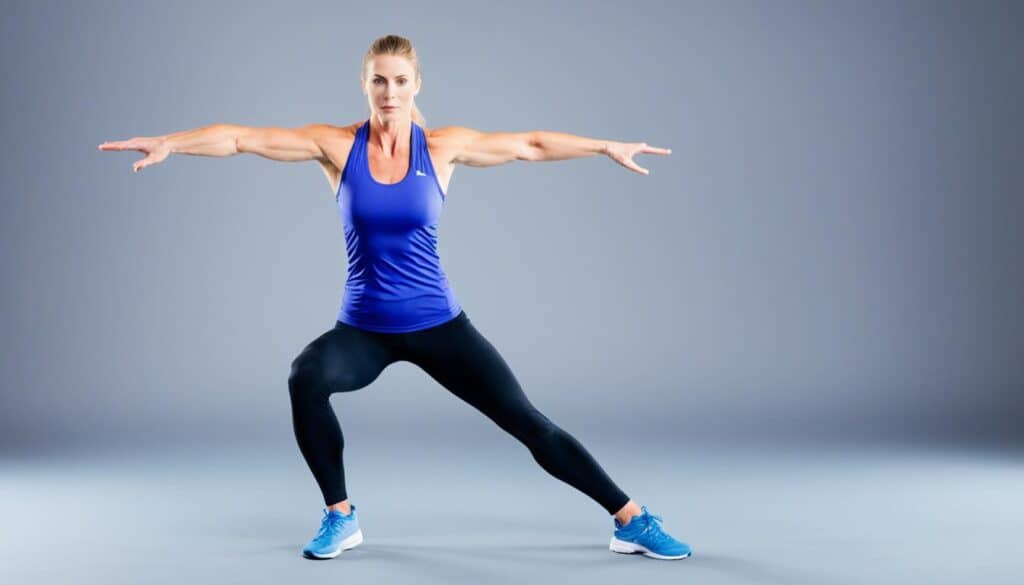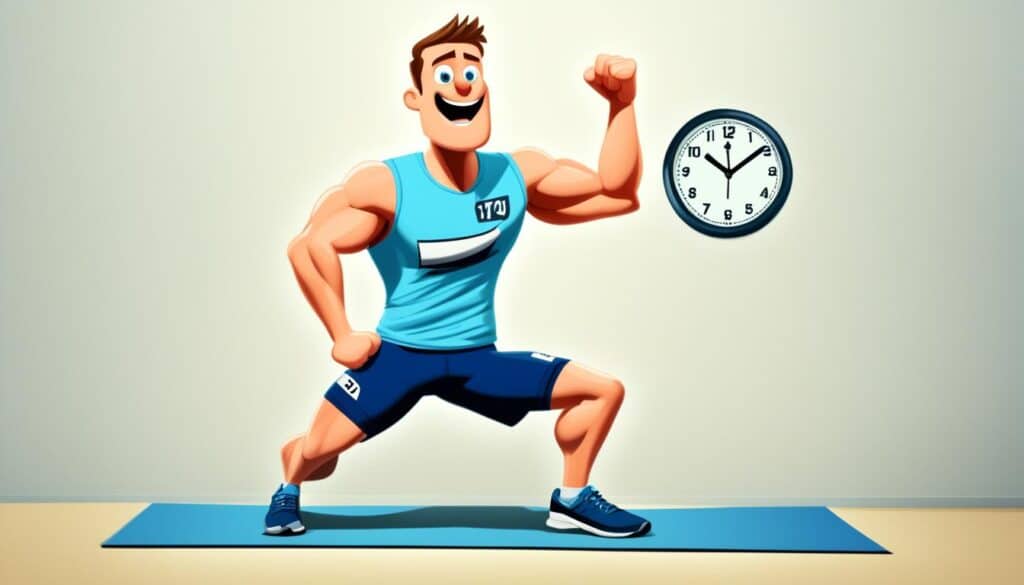Runner’s knee is a common issue faced by athletes, causing pain and inflammation in the knees. Whether you’re an avid runner or participate in high-impact sports, taking care of your knees is crucial for a successful athletic journey. To help you find relief and maintain healthy knees, we have compiled a list of five effective stretches for runners knee relief recommended by experts in orthopedics and physical therapy.
Meet Emma, a dedicated runner who has been struggling with runner’s knee for the past few weeks. Her knee pain has been hindering her training, and she’s anxious to find a solution. After consulting with a specialist, Emma learns that incorporating targeted stretches into her routine can alleviate pain, promote recovery, and prevent future injuries.
Emma commits to a new stretching regimen and notices positive changes in her knee health. Not only does she experience relief from the pain, but she also notices improved mobility and increased strength in her knees.
Now, let’s dive into seven effective stretches that can provide runner’s knee relief and help you get back on track with your training:
Lunging Hip Flexor
The lunging hip flexor stretch is a beneficial exercise for reducing pressure on the quads and knees. This stretch targets the hip flexor muscles, which can become tight and contribute to knee pain and discomfort. By incorporating this stretch into your routine, you can promote flexibility and strength in the hip flexor region, ultimately improving overall knee function.
To perform the lunging hip flexor stretch, follow these steps:
- Start in a lunge position with your right foot forward and your left knee resting on the ground.
- Engage your core and keep your upper body upright.
- Lean forward slightly, creating a gentle stretch in the front of your left hip.
- Hold the stretch for 30 seconds to 1 minute.
- Repeat on the other side by switching your leg positions.
Remember to breathe deeply and maintain a comfortable stretch throughout the exercise. If you experience any pain or discomfort, modify the stretch or consult with a qualified fitness professional. Incorporating the lunging hip flexor stretch into your regular routine can help alleviate knee pain and improve your overall flexibility.
Supine Hamstring
The supine hamstring stretch is a highly effective stretch for alleviating knee pain. By targeting the hamstrings, this stretch helps increase flexibility, improve blood flow, and reduce tension in the knee area. Follow these steps to perform the supine hamstring stretch:
- Lie flat on your back on a comfortable surface.
- Extend one leg straight out in front of you on the ground. Keep the other leg bent with your foot flat on the ground.
- Grasp the back of your thigh with both hands, just below the knee.
- Gently pull your bent leg towards your chest, keeping your back flat against the ground.
- Hold the stretch for 15-30 seconds, feeling a gentle pull in the back of your thigh.
- Repeat the stretch 2-3 times on each leg.
Note: If you have difficulty reaching your thigh, you can use a towel or resistance band to assist you in pulling your leg towards your chest. Adjust the tension of the towel or band to a comfortable level.
Incorporating the supine hamstring stretch into your stretching routine can help reduce knee pain, improve flexibility, and promote overall knee health. Remember to always listen to your body and stop if you experience any sharp pain or discomfort.
Hip Flexor and Quad
The hip flexor and quad stretch is a modification of the standing quad stretch specifically designed for individuals with knee injuries. This stretch targets the hip flexor muscles and quadriceps, helping to alleviate knee pain and improve flexibility in the hip and thigh areas.
To perform the hip flexor and quad stretch:
- Stand upright with your feet hip-width apart.
- Take a step forward with your right foot, ensuring your knee is directly above your ankle.
- Keep your left leg straight and place your left hand on a stable object for support.
- Slowly shift your weight forward onto your right leg, feeling a stretch in the front of your left hip and thigh.
- Hold the stretch for 30 seconds to 1 minute, breathing deeply.
- Repeat the stretch on the other side, stepping forward with your left foot.
Performing the hip flexor and quad stretch regularly can help improve the flexibility and strength of these muscle groups, reducing knee pain and supporting knee rehabilitation. Remember to listen to your body and only stretch to a comfortable level. If you experience any pain or discomfort, ease off the stretch and consult with a healthcare professional.

Note: Consult with a healthcare professional or physical therapist before starting any new exercise or stretching routine, especially if you have a knee injury or chronic knee pain.
Figure Four
The figure four stretch is a highly effective exercise for individuals with knee injuries as it targets the glutes and helps reduce pressure on the quads and knees. By incorporating the figure four stretch into your routine, you can promote healing and alleviate discomfort. Follow these steps to perform the figure four stretch:
- Lie on your back with both knees bent and feet flat on the floor.
- Cross one ankle over the opposite knee, creating a figure four shape.
- Use your hands to gently pull the uncrossed leg towards your chest, feeling a stretch in your glutes and outer hip.
- Hold the stretch for 30-60 seconds and repeat on the other side.
Remember to breathe deeply and avoid any sharp pain during the stretch. Gradually increase the intensity of the stretch over time. Performing the figure four stretch regularly can help improve flexibility and reduce knee pain caused by injuries.
Benefits of the Figure Four Stretch:
- Targets the glutes and outer hip.
- Reduces pressure on the quads and knees.
- Improves flexibility and range of motion.
- Promotes healing and alleviates knee discomfort.
| Figure Four Stretch | Benefits |
|---|---|
|
Standing Calf
The standing calf stretch is an important exercise for runners experiencing knee pain. This stretch focuses on releasing tension in the calves, which can help alleviate pressure on the knees and promote proper alignment and flexibility.
To perform the standing calf stretch:
- Stand facing a wall or sturdy object.
- Place your hands on the wall or object at shoulder level for support.
- Step back with one foot, keeping the heel flat on the ground.
- Bend your front knee and lean forward, keeping your back leg straight.
- You should feel a stretch in your calf muscle.
- Hold this position for 20 to 30 seconds.
- Repeat the stretch on the opposite leg.
Perform the standing calf stretch several times a day, especially before and after running or any physical activity. This stretch can help relieve tightness and improve circulation in the calf muscles, ultimately reducing knee pain in runners.
Expert Tip:
Remember to keep your back leg straight and focus on stretching the calf muscle without straining the knee joint. If you experience any pain or discomfort, modify the stretch by reducing the intensity or stopping altogether. Consult with a physical therapist or orthopedic specialist for personalized guidance and adjustments.

By incorporating the standing calf stretch into your routine, you can strengthen the muscles surrounding your knees and improve your overall range of motion. This stretch, along with the other exercises mentioned in this article, can help runners manage and prevent knee pain for a more enjoyable and successful running experience.
For more information about runners knee click HERE.
Conclusion
Incorporating knee pain exercises and knee rehabilitation stretches into your fitness routine is crucial for alleviating pain, promoting recovery, and improving overall mobility. However, it is essential to consult with an orthopedic specialist or physical therapist to determine the best stretches for your specific injury or pain. They can provide personalized guidance and ensure that you perform the exercises safely and effectively.
Remember, listening to your body is key. If any stretch causes discomfort or exacerbates your pain, modify it or seek professional advice. Every individual’s needs and limitations are unique, so it’s important to tailor your routine accordingly.
Consistency is key when it comes to knee pain exercises. By incorporating these stretches into your routine regularly, you can not only prevent future knee injuries but also enhance your athletic performance. Make it a habit to prioritize your knee health and continually work on strengthening and rehabilitating these essential joints. Your knees will thank you for it in the long run.

